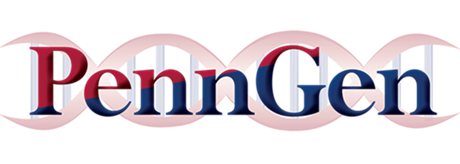Hematuria, stranguria, urinary obstruction, cystine crystalluria and urolithiasis. Urinary obstruction in affected female dogs is less frequent than in affected male dogs.
Affected dogs can block repeatedly, but there are no studies to determine the effect on lifespan.
Incomplete Autosomal Dominant
Histological changes are largely dependent on the extent of blockage and crystal formation. These can range from thickened bladder wall with invasion of inflammatory cells to nephritis.
SLC3A1 and NM_001003109.1:c.1095_1100del (Australian Cattle Dog)
SLC7A9 and NM_001048109.1:c.964G>A (Miniature Pinscher)
Explanation of Results
| Genotype |
Phenotype |
Interpretation |
| 2-2 (Homozygous Disease Variant) |
Unhealthy (Affected) |
Homozygous Affecteds (2-2) are expected to develop signs consistent with Cystinuria (Type 2) and all of their offspring will also be unhealthy (affected) by inheriting a disease variant allele. Parents, offspring and relatives should also be tested. You may choose to contact us for a consultation on the management of this disease. 1 = Normal allele; 2 = Variant allele. |
| 1-2 (Heterozygous) |
Unhealthy (Affected) |
Heterozygous Affecteds (1-2) are expected to develop signs consistent with Cystinuria (Type 2) and each of their offspring has a chance of being unhealthy (affected) by inheriting a disease variant allele. Parents, offspring and relatives should also be tested. You may choose to contact us for a consultation on the management of this disease. 1 = Normal allele; 2 = Variant allele. |
| 1-1 (Homozygous Normal) |
Healthy (Normal, Clear) |
Homozygous Normals (1-1) are not expected to develop signs of Cystinuria (Type 2) and none of their offspring will inherit the disease variant allele. 1 = Normal allele; 2 = Variant allele. |
Brons AK, Henthorn PS, Raj K, Fitzgerald CA, Liu J, Sewell AC, Giger U. SLC3A1 and SLC7A9 mutations in autosomal recessive or dominant canine cystinuria: a new classification system. J Vet Intern Med. 2013 Nov-Dec;27(6):1400-8. doi: 10.1111/jvim.12176. Epub 2013 Sep 3. PMID: 24001348; PMCID: PMC3946761.

